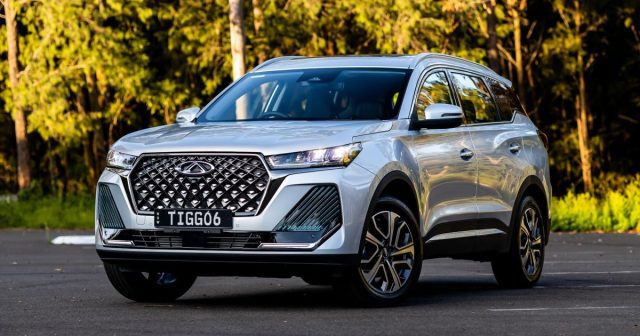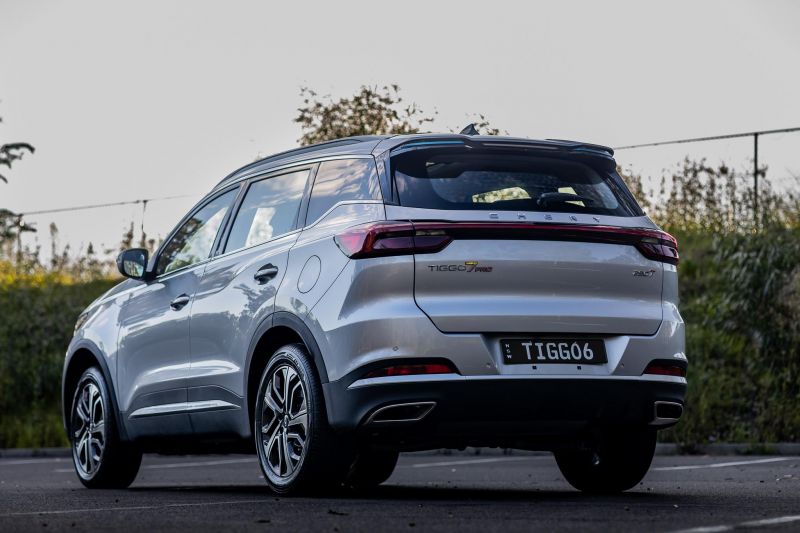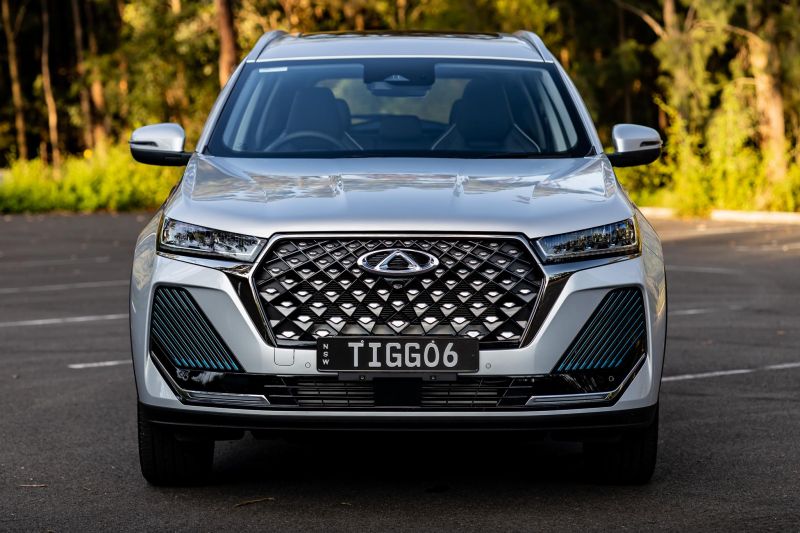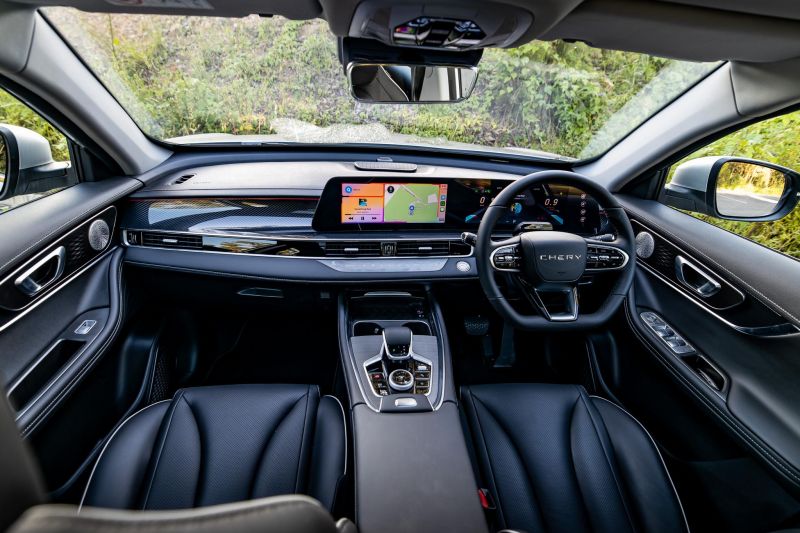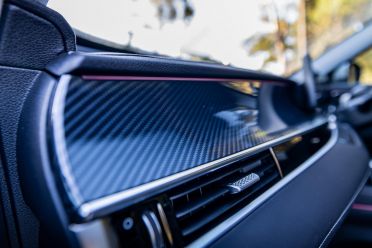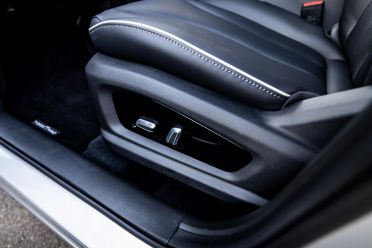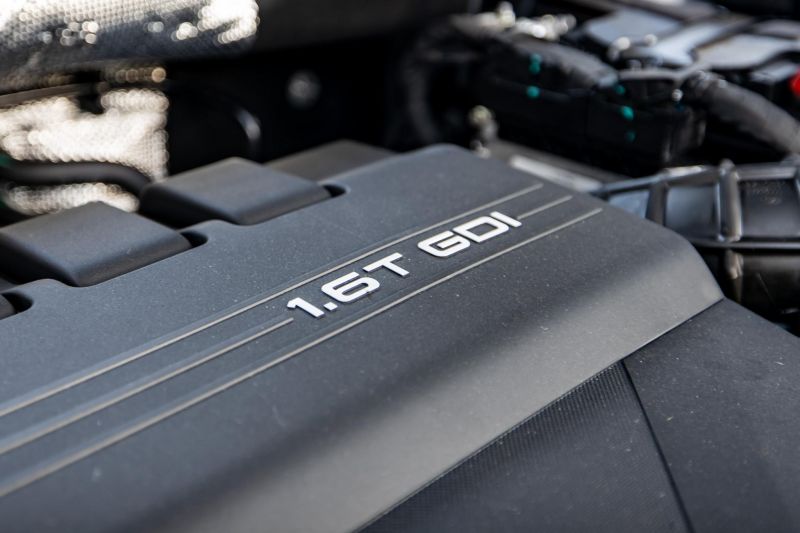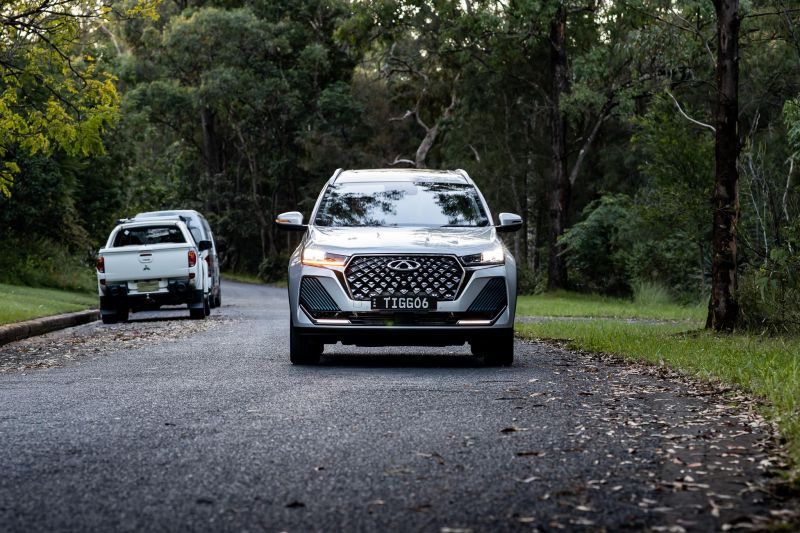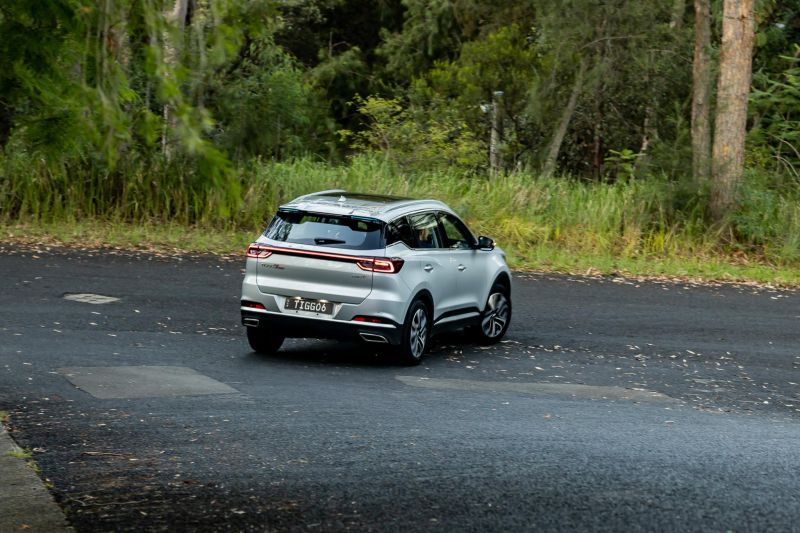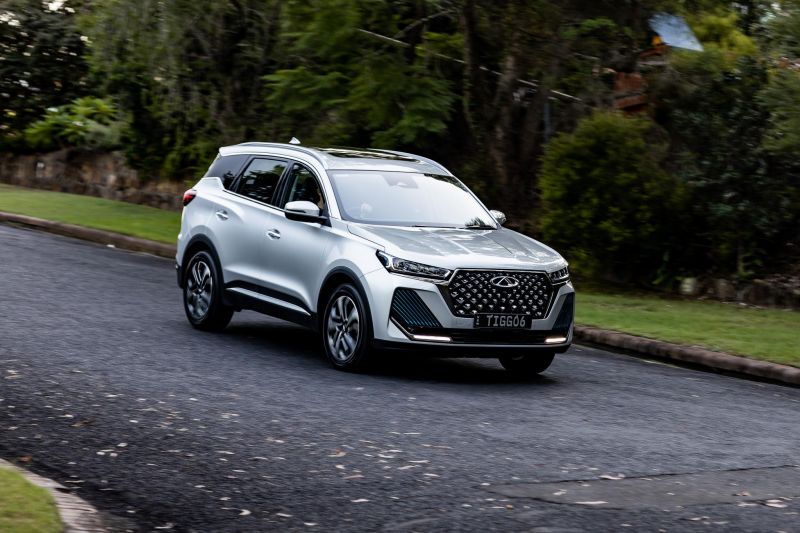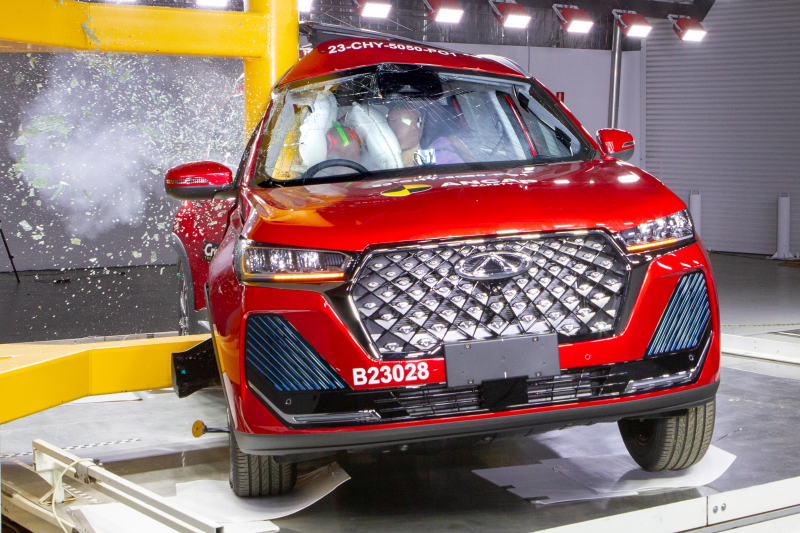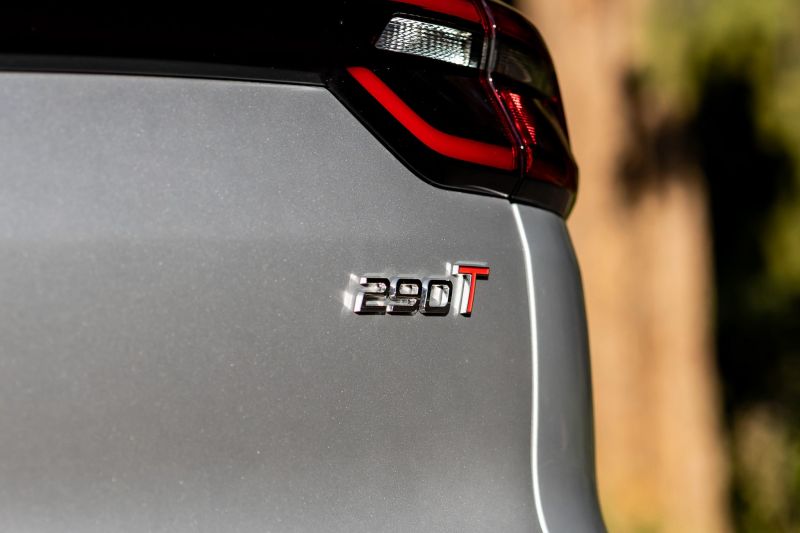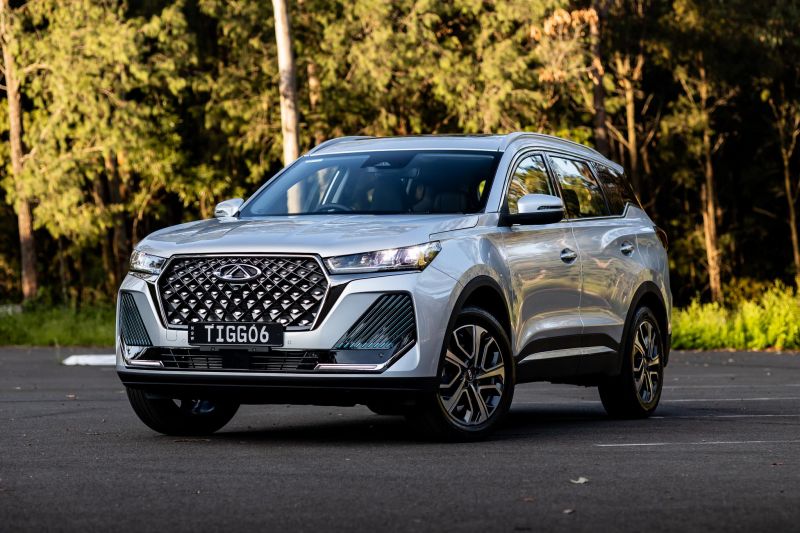Chery has hit the ground running with its SUV line-up, with the Tiggo 7 Pro having arrived in Australia in the second half of 2023.
This was our first chance to drive the most affordable version of the range, the 2024 Chery Tiggo 7 Pro Urban 2WD, which is more affordable than plenty of its midsize rivals despite offering an immense standard equipment list.
It’d be easy to surmise that this model is all about showroom wow-factor with so much glitz and glam inside and out… but is there more to it? Read on and you’ll find out.
How does the Chery Tiggo 7 Pro compare?
View a detailed breakdown of the Chery Tiggo 7 Pro against similarly sized vehicles.

Chery
Tiggo 7 Pro
How much does the Chery Tiggo 7 Pro cost?
At the time of writing, Chery is offering some sharp deals on the Tiggo 7 Pro – with this Urban 2WD model seeing huge savings.
2024 Chery Tiggo 7 Pro pricing:
- Chery Tiggo 7 Pro Urban 2WD: $39,990 D/A (currently $36,990 D/A)
- Chery Tiggo 7 Pro Elite 2WD: $41,990 D/A
- Chery Tiggo 7 Pro Ultimate AWD: $45,990 D/A
Prices are drive-away
To see how the Tiggo 7 Pro lines up against its rivals, check out our comparisons tool.
What is the Chery Tiggo 7 Pro like on the inside?
There’s some showroom ‘wow factor’ when it comes to the interior of the Tiggo 7 Pro, even in the entry-level version.
From the moment you sit in the seat and the musical showpiece comes up across the twin screens, through to the comfort and space on offer in the cabin, it does feel like a pretty nice place to sit for this kind of money.
There are some ‘not cheap’ feeling materials, including soft finishes wherever your elbows might hit or even where your knees might touch. And the seat comfort and adjustability is good as well.
There’s a leather-lined steering wheel and gearshift as well, and all grades including this base model have the big glass sunroof, dual-zone climate control and heated front seats.
There’s also a wireless phone charger, a couple of USB ports, and decent storage including a pair of big cupholders, large bottle holders in the doors, a decent sized glovebox, and a big centre console bin – and that bin is cooled too!
The issues arise when you come to try and use a lot of the functionality of the systems in this car.
You do get used to the fact that you have to adjust the climate controls and fan controls using the little touch bar down below the screen, and thankfully it is there – some other cheaper SUVs don’t have any useful form of interactivity with the system, unless you go directly through the screen.
You also have to go through the screen for a lot of stuff, especially if you don’t appreciate some of the driving safety systems that are fitted – more on that in the driving section.
Suffice to say, though, that the screens are relatively good when it comes to simply hooking up a phone – I used wireless Apple CarPlay during my time with this car, and it is largely fine – but when you connect your phone, I found that you must start the sequence by connecting from the car, not from your phone. The driver info screen is pretty decent too.
Likewise, the other driving controls aren’t too bad, with a decent array of buttons, and controls on the steering wheel, a standard stalk on the right side for your indicators – the right side!
There’s also a volume dial and a couple of buttons down near the shifter – and that gear selector takes a little bit of learning, because it’s not a traditional T-bar auto. It’s an e-shifter, so you just need to pull the selector down for drive or push it up for reverse, rather than push the button in on the side (that is the manual mode button).
Second-row space in the Tiggo 7 Pro is excellent – far more spacious and family-friendly than plenty of other midsize SUVs, like a Mazda CX-5.
With the driver’s seat set for my position (182cm or 6’0 tall), I had inches of knee room, heaps of toe room and loads of head room as well, with a decent view out the window too, which will keep little ones happy.
There are ISOFIX points in the window seats and three top-tethers, and the doors open pretty wide for loading in the little ones.
Amenities in the backseat include sizeable door pockets, map pockets on the seatbacks, directional air vents with a small storage space below (and USB-A port), and even in the base model you still get a drop-down armrest with cupholders. Seat comfort is good, and the floor is pretty flat too, so you could fit three adults across if you needed to.
Boot space is decent with a fair amount of room for luggage for a family – Chery quotes 626L ‘minimum’ for the luggage capacity, expanding to a maximum of 1672L. It’s not clear which measuring standard is used for these figures, though it appears the volume is measured to the roof.
But you do get two flip-down shopping bag hooks and a bright LED light to make night time loading easier, as well as a 12V outlet – and, best of all, there’s a full-size spare wheel under the boot floor.
What’s under the bonnet?
All models in the Tiggo 7 Pro range are powered by a 1.6-litre four-cylinder turbocharged petrol engine producing 137kW of power (5500rpm) and 275Nm of torque (2000-4000rpm).
All versions also come with a seven-speed dual-clutch automatic transmission, and as mentioned above this version is front-wheel drive. That means it’s supposedly quicker than the AWD model (which is heavier), and runs 0-100km/h in 9.5 seconds (versus 9.9s AWD).
The official combined cycle fuel use figure for the 2WD models is 7.0L/100km (7.8L/100km AWD), and all versions require 95 RON premium unleaded fuel. The 2WD models have a 51-litre fuel tank. During my test, which included a mix of urban, highway, freeway and stop-start traffic, I saw a displayed consumption of 8.3L per 100km.
Now, if you’re a family car buyer and you might occasionally need or want to tow something, keep this in mind – no version of the Tiggo 7 Pro is rated to tow anything.
And further to that, the tare weight of this car is 1512kg and the maximum capacity is 1895kg, meaning if you’ve got a heavier family, you might have to go on a diet before you buy one, as there’s only 383kg of usable capacity.
How does the Chery Tiggo 7 Pro drive?
For the most part, this is a liveable SUV.
While the turbocharged petrol engine and dual-clutch automatic transmission might not be the smoothest pairing in automotive history, they are usable enough in the majority of situations around town, or at speed as well.
Where they don’t work as well together is when you have cruise control active, and you encounter any form of incline while driving. In that instance, you will notice that the transmission simply doesn’t know what it’s doing – shifting between fifth, sixth and seventh gear at multiple different speeds (I tested this over a 500km road trip).
The transmission, in combination with the radar cruise system, simply doesn’t possess any grade logic compared to other automatic transmissions. If that isn’t a big deal for you – maybe you don’t like using cruise control – then this could be fine. And in other ways it’s also relatively fine.
The suspension offers a very good balance between control and cushiness over bumpy sections, and never did I really feel that I was unhappy with how this car was handling itself when it came to dealing with smaller lumps, sharp bits or bigger potholes.
Likewise, the steering – while a little bit slow at low speeds – is manageable in the majority of different driving scenarios. It’s easy enough to park this car. And even though the base model just gets a reversing camera rather than the surround view of higher grades, it’s very crisp and easy to view.
What could be definitely better is the tyres – Atlas A51 225/55 R18 units. A set of name brand tyres would (in theory) dramatically improve the drive experience for those who, like for their car to follow the path they intend it should. The standard tyres are easily overwhelmed by the engine’s torque, especially in the wet, and they can even squeal when you’re not trying to make them do that.
Otherwise, refinement is decent in terms of noise, vibrations, and harness, there’s not too much to complain about as an open road commuter car, apart from that annoying adaptive cruise control.
However, in order to make this car as liveable as I’ve made it out to be, you simply cannot leave the active safety technology on in its full capacity.
The driver monitoring camera system is one of the worst pieces of new car technology that I have ever experienced – and I’ve been driving new cars for more than 15 years now.
Likewise, the emergency lane-keeping assistance will consistently get it wrong, and it seems that the car will also slow you down for corners when you have cruise control active, even though there’s no danger.
It’s hardly enjoyable, and the speed and recognition system is incessantly insistent to the point of abstract frustration.
If only this car was available with those things missing from spec sheet, it would be 100 times more compelling. And I’m not exaggerating.
What do you get?
I think this is where the Tiggo 7 Pro Urban 2WD makes its strongest argument because really, you don’t need much more than you get in this base spec car.
Tiggo 7 Pro Urban highlights:
- Automatic LED headlights
- Rain-sensing wipers
- 18-inch alloy wheels in Atlas tyres
- Full-size spare
- Tyre pressure monitoring
- Three drive modes (Eco, Sport, Normal)
- Keyless entry and start
- Remote start
- Electronic parking brake with auto hold
- Artificial leather upholstery
- Artificial leather-wrapped steering wheel
- 4-way steering wheel adjustment
- Heated front seats (cushion and backrest)
- 6-way power driver’s seat
- 4-way power passenger seat
- Dual-zone climate control
- Panoramic sunroof
- 12.3-inch digital instrument cluster
- 12.3-inch touchscreen infotainment system
- Wireless Apple CarPlay and Android Auto
- Satellite navigation
- Voice assistant
- 8-speaker Sony sound system
- Wireless phone charger
- Ambient lighting
- Front and rear USB outlets including USB-C
- 2 x 12V outlets (front, boot)
Tiggo 7 Pro Elite adds:
- Power-folding exterior mirrors
- Power tailgate
- Illuminated sill plates
- Air quality management system with negative ion air freshener
- Cargo blind
- Optional black roof
Tiggo 7 Pro Ultimate AWD adds:
- 19-inch alloy wheels with Cooper tyres
- Drive modes – Eco, Sport, Normal, Snow, Mud, Off-road
- Red front brake calipers
- Power-folding exterior mirrors with memory
- Auto-dimming rear-view mirror
- Ventilated front seats (cushion only)
- Power driver’s seat with memory
Is the Chery Tiggo 7 Pro safe?
The Chery Tiggo 7 Pro scored a five-star ANCAP safety rating in 2023.
It certainly managed some impressive scores as part of the watchdog’s testing, including an adult occupant protection rating of 88 per cent, a child occupant protection rating of 87 per cent, a vulnerable road user protection rating of 72 per cent, and a safety assist rating of 86 per cent.
As I mentioned above, the advanced safety systems don’t seem to have been tailored to real-world driving so much as they have to pass these tests with flying colours. But even so, it is an extensive range of technology offered range-wide.
Standard safety equipment includes:
- 8 airbags incl. front-centre, driver’s knee
- Autonomous emergency braking (AEB)
- Blind-spot monitoring
- Child presence detection
- Driver monitoring system
- Forward collision warning
- Integrated Cruise Assist
- Adaptive cruise control
- Lane centring assist
- Traffic jam assist
- Intelligent Headlamp Control
- Lane departure warning
- Lane keep assist
- Parking sensors front, rear
- Rear cross-traffic assist
- Safe exit warning
- Speed limit assist
- Traffic sign recognition
Tiggo 7 Pro Elite adds:
How much does the Chery Tiggo 7 Pro cost to run?
Chery Australia has a seven-year, unlimited-kilometre warranty for the Tiggo 7 Pro.
There’s also seven years of capped-price servicing, with service intervals set at 12 months/15,000km for all grades.
The average cost for the 2WD models is just $294 per year, while the top-spec AWD costs a little more to maintain ($315 per year) – those are astounding prices for maintenance, undercutting most mainstream rivals by hundreds of dollars per year on average.
There’s also up to seven years of roadside assistance included, provided you service the car with Chery’s network of dealers – it renews on a yearly basis with each service.
CarExpert’s Take on the Chery Tiggo 7 Pro
The price is very enticing, so is the warranty cover and the fact you’re getting a five-star safety rating for a new model from a challenger brand.
But there are some deeper design, technology, usability and implementation issues here.
For some they won’t be a big deal, but for those who appreciate a car that is intuitive and simple to interact with, there are certainly better options out there.
Click the images for the full gallery
MORE: Buy a Chery Tiggo 7 Pro
MORE: Everything Chery Tiggo 7 Pro














